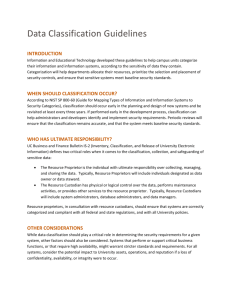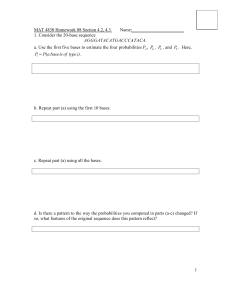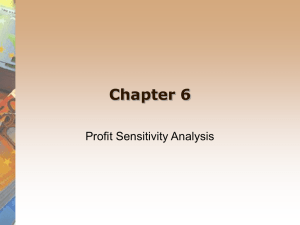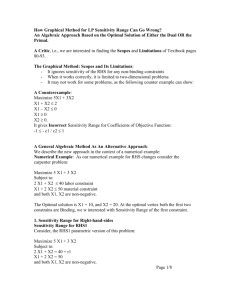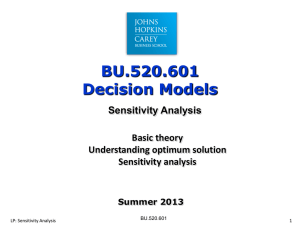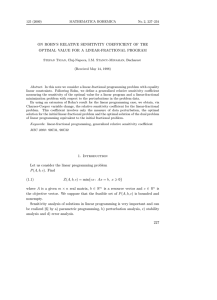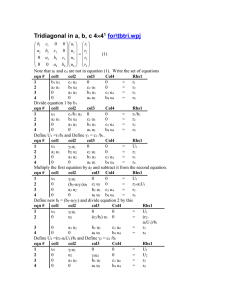How to Compute Sensitivity Ranges: A Solution
advertisement
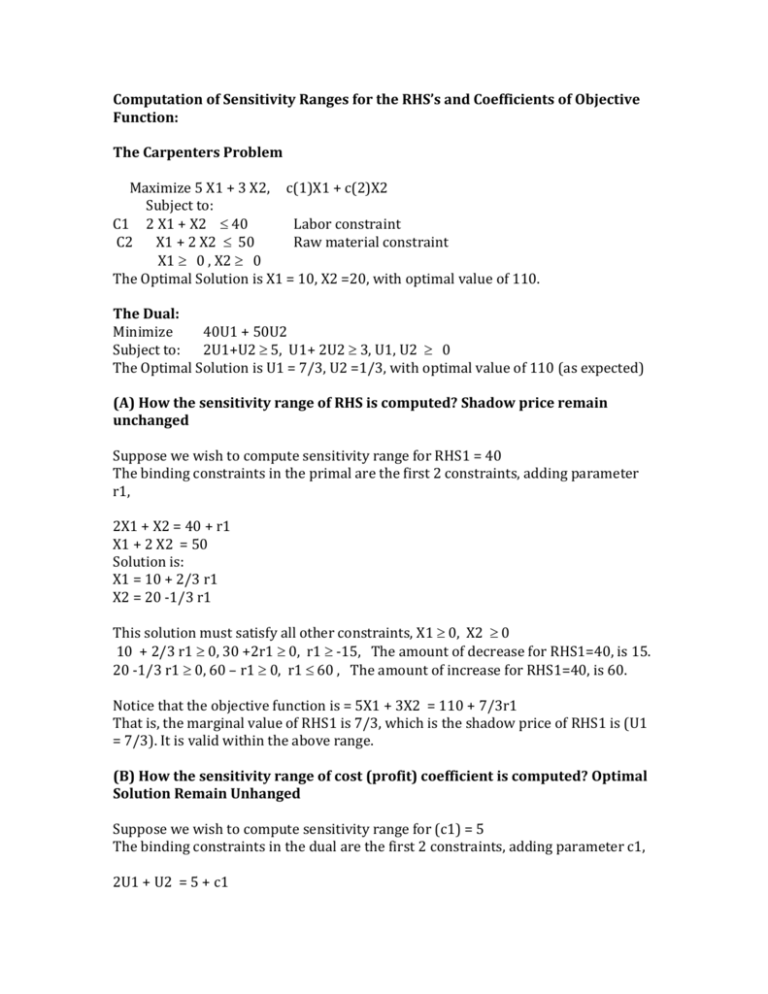
Computation of Sensitivity Ranges for the RHS’s and Coefficients of Objective Function: The Carpenters Problem Maximize 5 X1 + 3 X2, c(1)X1 + c(2)X2 Subject to: C1 2 X1 + X2 40 Labor constraint C2 X1 + 2 X2 50 Raw material constraint X1 0 , X2 0 The Optimal Solution is X1 = 10, X2 =20, with optimal value of 110. The Dual: Minimize 40U1 + 50U2 Subject to: 2U1+U2 5, U1+ 2U2 3, U1, U2 0 The Optimal Solution is U1 = 7/3, U2 =1/3, with optimal value of 110 (as expected) (A) How the sensitivity range of RHS is computed? Shadow price remain unchanged Suppose we wish to compute sensitivity range for RHS1 = 40 The binding constraints in the primal are the first 2 constraints, adding parameter r1, 2X1 + X2 = 40 + r1 X1 + 2 X2 = 50 Solution is: X1 = 10 + 2/3 r1 X2 = 20 -1/3 r1 This solution must satisfy all other constraints, X1 0, X2 0 10 + 2/3 r1 0, 30 +2r1 0, r1 -15, The amount of decrease for RHS1=40, is 15. 20 -1/3 r1 0, 60 – r1 0, r1 60 , The amount of increase for RHS1=40, is 60. Notice that the objective function is = 5X1 + 3X2 = 110 + 7/3r1 That is, the marginal value of RHS1 is 7/3, which is the shadow price of RHS1 is (U1 = 7/3). It is valid within the above range. (B) How the sensitivity range of cost (profit) coefficient is computed? Optimal Solution Remain Unhanged Suppose we wish to compute sensitivity range for (c1) = 5 The binding constraints in the dual are the first 2 constraints, adding parameter c1, 2U1 + U2 = 5 + c1 U + 2 U2 = 3 Solution is: U1 = 7/3+ 2/3 c1 U2 = 1 /3–1/3c1 This solution must satisfy all other constraints, U1 > 0, U2 > 0 7/3 + 2/3c1 0, 7+ 2c1 0, c1 -7/2, The amount of decrease for c(1) = 5, is 2.5 1/3 – 1/3c1 0 , 1 – c1 0 c 1 1, The amount of increase for c(1)= 5, is 1. Notice that the objective function of the dual function is: 40U1 + 50 U2 = 110 + 10 c1 That is the marginal value of the dual is 10, which is the solution to the primal (X1 = 10). It is valid within the above range. Similarly one can compute the other ranges. C) What is the 100% Rule In Sensitivity Analysis? The sensitivity range presented in the previous sections is a "one-change-at-a-time" type of what-if analysis. Suppose we want to find the simultaneous allowable change. There is an easy method to apply here known as "the 100% rule" which says that the change valid if the following sufficient condition holds: Extracted From: Construction of General Sensitivity Regions http://home.ubalt.edu/ntsbarsh/opre640A/PartVII.htm

